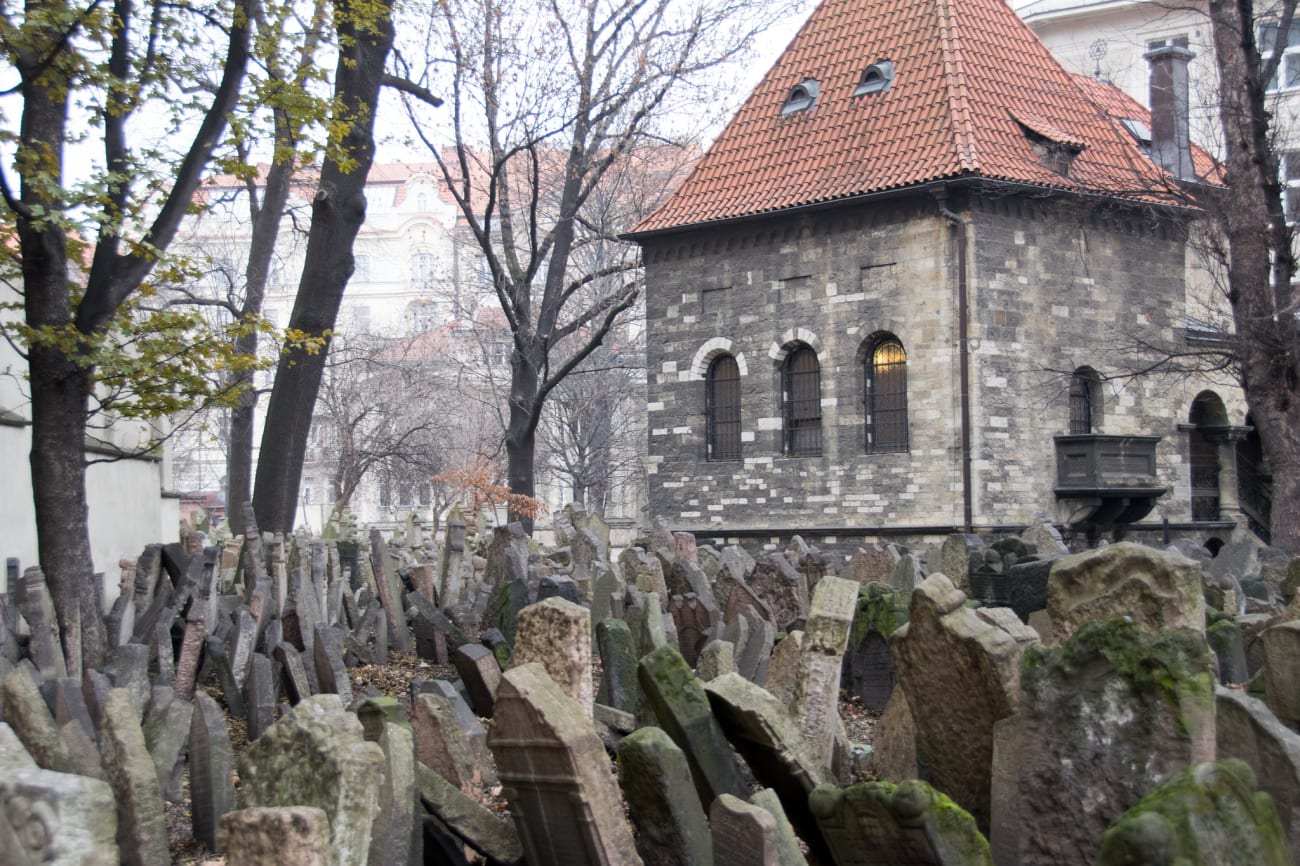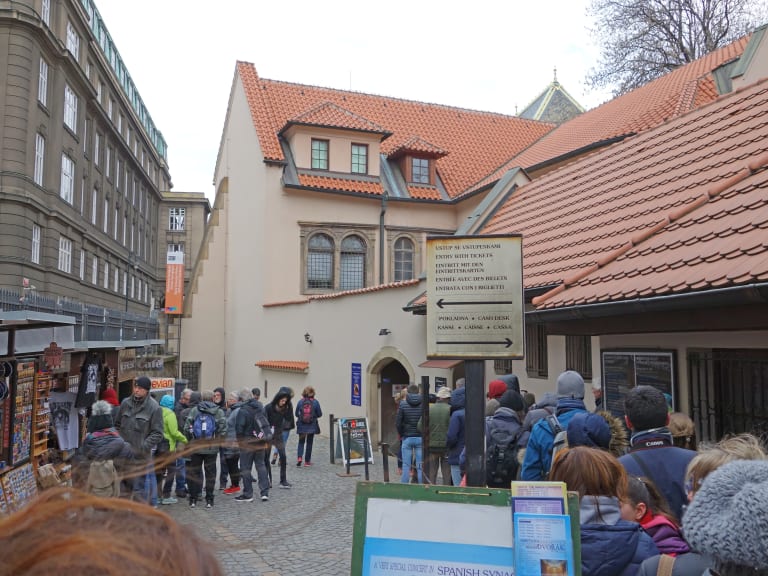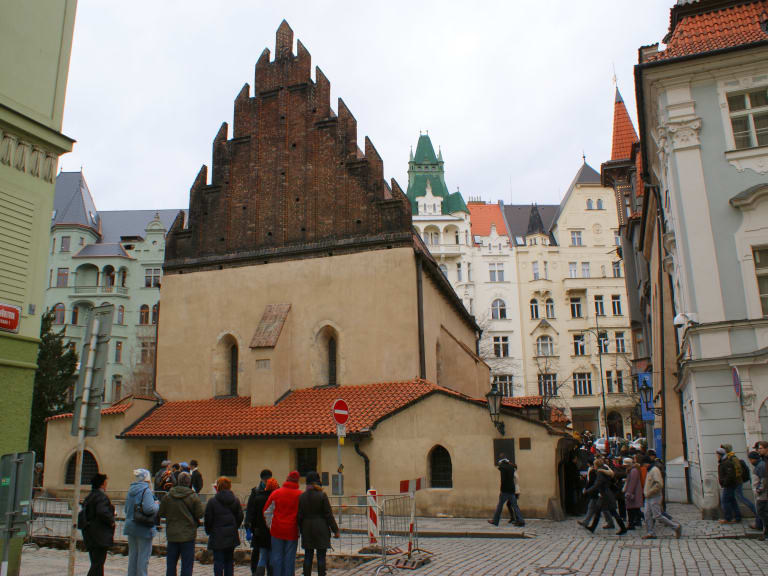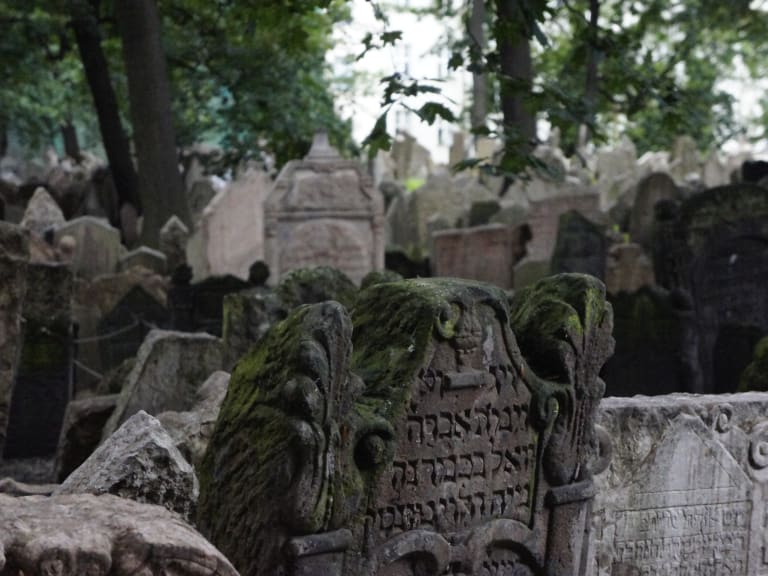Jewish Graveyard Prague: everything you need to know
Everyone who visits Prague's Jewish Cemetery is impressed and awed in equal measure. Find out why and what to see and do in one of Prague's most special places.

Prague Jewish Cemetery | ©Paul Asman
The Jewish Cemetery in Prague is one of the must-see places in Prague. This place has a special atmosphere that impresses with its beauty and is awe-inspiring because of its history. Located in the Jewish quarter of the city, this cemetery is one of the most peculiar in the world and also the most crowded in Europe.
Thousands of tombstones and more than 100,000 bodies are concentrated in a relatively small area. How is this possible? In this post I'll tell you all about its history and what you should see and do if you visit Prague's Jewish cemetery.
1. Find out why Prague's Jewish cemetery is one of the most peculiar in the world

Prague's Jewish Cemetery is no ordinary cemetery. There are no grand monuments adorning the tombstones, nor are there any carefully tended flower gardens, unlike other famous cemeteries in European capitals. Its peculiarity lies in the fact that it is the most overcrowded cemetery in Europe and probably in the world.
For more than 300 years it was the only place in Prague where Jews could bury their dead. It was established in the mid-15th century in Josefov, the Jewish quarter of Prague, and over the years some 100,000 people were buried there.
In a relatively small area this seems impossible, but there is an explanation for this, which you can learn about by taking a tour of Prague's Jewish Quarter with a professional local guide.
2. Visit the illustrious figures buried in the cemetery

Among the 12,000 gravestones in this cemetery are some that belong to illustrious figures from Jewish culture and the history of the city of Prague. They are the most photographed by tourists and the main attractions of the cemetery, which you can also visit on a tour of the Jewish Quarter. Some of the most famous people buried in this cemetery are:
- David Oppenheim: a famous rabbi of the city of Prague who lived during the 18th century.
- David Gans: Jewish historian and astronomer, the Star of David was first used on his tombstone as the emblem of the Jewish community.
- Judah Loew: As well as being a rabbi, he was a Jewish philosopher known as 'the Maharal of Prague' who is credited with inventing the legend of the Jewish Golem.
- Mordecai Maisel: one of the leaders of the city of Prague during the 16th century. He built the city synagogue that bears his name, which you can visit on the tour we have already told you about.
3. Learn about the legend of the Prague Golem

In Jewish popular culture there is a legend so well known that it has even appeared on television in "The Simpsons". It is the legend of the Prague Golem. The creation of this golem, or this legend, is attributed to Judah Loew, yes, the rabbi who was buried in the Jewish cemetery and whose tombstone can be visited on the tour of the Jewish quarter.
Legend has it that this rabbi created the golem out of mud and clay and with the spark of God to protect the inhabitants of the Jewish ghetto from anti-Semitic attacks. This mythological being worked if you wrote a task on a piece of paper and put it in his mouth. It was a creature of extraordinary strength but little intelligence. In the cemetery and the Jewish quarter this legend is very present.
Another great thing about a tour of the Jewish Quarter is that you can learn more about this story, as well as other stories surrounding Jewish culture.
4. Go to the place where the "Protocols of Zion" conspiracy was born.

Prague's Jewish cemetery was the site of one of the most famous anti-Semitic conspiracies in history: the Protocols of Zion. In 1902 Tsar Nicholas II of Russia and his police service published a pamphlet called "the Protocols of Zion" in which they accused the elders of Zion of meeting in the Jewish cemetery in Prague to plot and plan world domination.
This was of great historical significance, as it served as a pretext for anti-Semitic persecution and later served as the inspiration for Nazi ideology. Years later it was shown that these protocols had no basis in fact and were plagiarised from two fictional novels.
In 2010 this story resurfaced again after the publication of Umberto Eco's novel "The Prague Cemetery", which was based on this conspiracy and which boosted the arrival of tourists to the Jewish cemetery.
5. Walk through the Pinkas Synagogue, the Holocaust memorial

To access the Jewish cemetery we have to go through the Pinkas Synagogue, the second oldest synagogue in Prague, dating back to 1535, which is part of the Jewish museum where there are temporary exhibitions related to Jewish life in Prague and the tragic history of the Jewish people.
The synagogue is now a memorial to the Jews and Czechs who were victims of the Nazis. On the walls inside are handwritten the names and surnames of 80,000 Jewish victims of the Holocaust.
The same mosque also holds letters from the prisoners of Terezin, a concentration camp near Prague, which can be visited on an organised excursion to Terezin from Prague.
6. See the ceremonial hall of the Jewish cemetery

Next to the Synagogue and in the cemetery is a pseudo-Romanesque building that was once the morgue of the cemetery. It was used as a ceremonial hallfor Jewish burial rites and today is also part of the Jewish Museum.
Today it houses a permanent exhibition on the history of the Prague Funeral Society, founded in 1564 by Rabbi Eliezer Ashkenazi, whose headquarters were in the same building.
7. Visit other synagogues in the Jewish Quarter

Entrance to the cemetery costs 12 euros and, although it may seem an expensive price for a visit to the cemetery that can be covered in just half an hour, it also includes a visit to some of the synagogues in the Jewish Quarter. The ones we can see with the same ticket are:
- Spanish Synagogue: so called because of its Moorish decoration similar to that found in the Alhambra in Granada.
- Klausen Synagogue: it adjoins the cemetery and its main attraction is its library, which houses several copies of Hebrew books of great value.
- Maisel Synagogue: houses a collection of objects from the Jewish tradition. The original building suffered an inferno and had to be renovated and changed its style several times until it remained in the neo-gothic style.
- High Synagogue: this name is due to its Renaissance style and its two floors. For a time it was part of the town hall of the Jewish quarter.
8. Take the opportunity to visit the Old-New Synagogue

The entrance to the Jewish Cemetery does not include access to one of the most important synagogues in Prague and Europe: the Old-New Synagogue. Dating from 1270, it is the oldest active synagogue in Prague and in all of Europe.
In Gothic style, it was one of the first buildings of this style in the capital of the Czech Republic. It has survived fires, riots and the Jewish Holocaust, among other things, and today it is still active, welcoming worshippers and tourists.
According to legend, the mythical Prague Golem rests inert in the attic of this synagogue waiting to be resurrected when the times call for it.
9. Visit the Jewish Museum

The Jewish Museum is not a typical museum, in fact it is not housed in a single building, but in 8, namely in the synagogues of the Jewish quarter, in the cemetery, in the Roberta Guttmanna Gallery and in a visitor centre.
This institution is one of the oldest and most important Jewish museums in the world. It was founded in 1906 and its aim is to document the history of the Jewish people in the Czech Republic, to preserve all objects and documents of value and to disseminate the traditions and customs of the Jewish people.
10. Don't try to see Kafka's tomb

Many visitors to the Jewish cemetery come to see the grave of one of literature's most influential writers, Franz Kafka.
This is a common confusion, as the author is in the Jewish cemetery but not in the Jewish cemetery. The overcrowding of the cemetery eventually forced the opening of another cemetery in Prague known as the New Jewish Cemetery.
This is where the author's remains rest, and this other cemetery can also be visited and is located in the Žižkov district of the Czech capital. And if you are really interested in learning more about the writer's life in the capital, I recommend you book a Franz Kafka tour in Prague.
